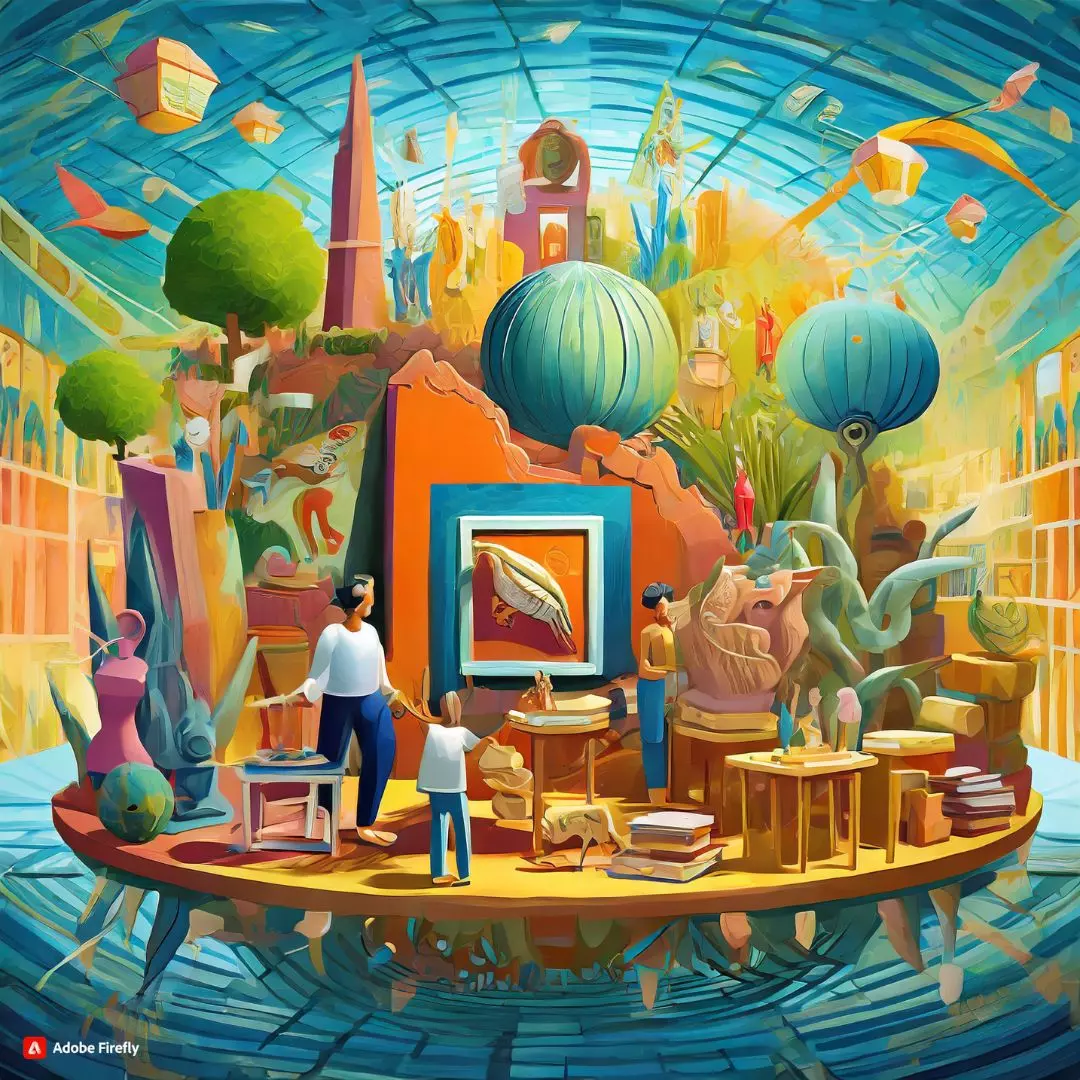The enchanting world of art has always possessed a unique charm, evolving beyond its intrinsic beauty into a sought-after avenue for investment. Owning a valuable masterpiece that not only graces your walls but also holds the potential to appreciate over time is undeniably appealing. In this exploration, we delve into the world of art as an investment, unraveling the dynamics, challenges, and opportunities of fine art and collectibles.
Art has a dual identity, transcending a mere painting or sculpture to become a potential asset offering returns on investment. This duality makes the art market captivating yet complex, as it converges both aesthetic and investment values. The art market operates uniquely, lacking a daily trading market, and relies on auctions, galleries, and private sales. Factors like an artist’s reputation, rarity of the piece, and market demand significantly influence an artwork’s value.
Understanding the artist’s significance is fundamental in art investment. Renowned artists produce works with higher investment potential, yet emerging artists can also be lucrative with a discerning eye. Research into an artist’s reputation, exhibition history, and critical acclaim is crucial, along with considering the provenance or history of ownership, impacting the artwork’s value.
Art spans diverse forms, from traditional paintings and sculptures to contemporary mediums like digital art and installations. Each category has unique market dynamics, with traditional paintings by renowned artists historically strong investment options. Sculptures, with their physical presence, are also highly desirable, while contemporary and digital art reflect evolving trends.
Investing in art is not without challenges, requiring a profound understanding of the market, substantial capital, and resilience to market fluctuations. Liquidity can be an issue, with selling a valuable artwork taking time and incurring high transaction costs. Authentication concerns, such as forgeries and provenance, add complexity. Diversification is crucial, balancing portfolios with other asset classes.
Myriad Financial Benefits
Art and collectibles can serve as valuable components in a diversified investment portfolio, offering a level of diversification to mitigate risks. The art market, not always moving in sync with traditional financial markets, provides a potential hedge against economic downturns. The art-as-an-investment endeavor demands a keen eye, a comprehensive understanding of market dynamics, and a readiness to embrace both the joys and challenges.
Whether it’s whisky, wine, watches, or art, investing in passion is emotionally satisfying and financially rewarding. Luxury collectibles classified as investment grade provide an excellent avenue to diversify portfolios while expanding personal collections. The concept of collecting luxury items as a financial investment dates back to the Victorian era, with a notable shift towards passion investments in recent years.
Passion investment encompasses a broad range of luxury collectibles, each with unique consumption dynamics. Fine wines and limited-edition whisky are consumed selectively, while art stands out as an investment that appreciates in value simply through appreciation. As enjoyment and value retention are not linked, art becomes a unique passion investment.
According to Arts Economics 2021, high-net-worth collectors allocate over 10% of their portfolios to art, showcasing the myriad financial benefits. Investment-grade artwork exhibits low correlation with stocks and bonds, reducing risk and volatility. Historically, art outperforms the stock market during economic downturns and serves as a refuge during periods of high inflation, retaining its value.
However, beyond financial benefits, owning art enhances quality of life, providing aesthetic pleasure and intellectual stimulation. The rich history of art challenges and stimulates intellectually, giving a unique insight into a human experience accessed through the power of art.
Investing in art requires setting clear objectives, conducting thorough research aligned with passion and investment strategy, seeking professional guidance, and budgeting wisely. Reputable platforms and auction houses, whether for full ownership or fractional investment, play a crucial role.
In conclusion, art investment is a distinctive endeavor, combining the appreciation of beauty with the pursuit of financial gain. Navigating the complexities demands a keen eye, comprehensive understanding, and a readiness to embrace both the joys and challenges. Whether a seasoned collector or newcomer, the allure of art as an investment continues to shine brightly in the evolving landscape of passion investments.
Also Read: UN Security Council Passes Resolution Urging Unhindered Humanitarian Access In Gaza Strip











